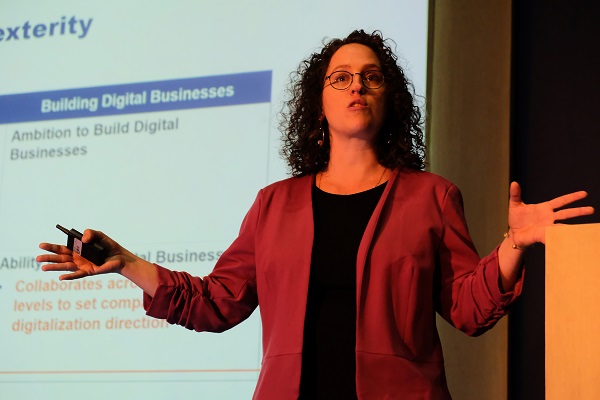CIO is the catalyst for digital dexterity
CIO is the catalyst for digital dexterity

The CIO must be the culture change agent to enhance digital dexterity as a competency that applies to individuals, teams and the organisation as a whole.
This is according to Gartner executives who have presented at the company's IT Symposium and Xpo underway in Cape Town, South Africa this week.
Gartner explains that as society and business increasingly consume and produce digital goods and services, a digitally dexterous workforce is essential to foster agility, collaboration and the adoption of new digital technologies.
"The digital component of most jobs is increasing. Technical skills are important, but are not enough to steer a successful digital business transformation," said Helen Poitevin, research vice president at Gartner. "Business and IT leaders need to employ the right talent with a specific set of mindsets, beliefs and behaviours - which we call digital dexterity - to launch, finish and capitalise on digital initiatives."
Digital dexterity points to the ambition and attitude around digital skills to support workplace transformation that is part of digital transformation said Poitevin.
In the execution of their upskilling and reskilling efforts, as part of their digital transformation programmes, companies are looking for people who can be more innovative, analytical and creative.
"The payoff from digital dexterity can be significant. Employees with high levels of digital dexterity are more than three times more likely to gain value from digital initiatives than those with moderate digital dexterity. They are quicker to launch, finish and obtain the outcomes they seek from digital initiatives," said Poitevin.
In 2019, 29% of CIOs in EMEA viewed digital business as a top priority, so improving digital dexterity throughout the organisation is crucial. To help their employees to develop digital dexterity traits, business leaders need to build them up by enabling enterprise agility and developing digital competencies. Above all, business leaders need to make digital dexterity a C-suite priority.
Chief HR officer partnership
"Mindsets and practices shape culture, and technology acts as an amplifier of that culture. Technology by itself seldom changes an organisation's culture," said Daniel Sanchez Reina, senior research director at Gartner. Technology is often the backbone of how work gets done and reinforces the company culture, which is why culture change is becoming an increasing responsibility of IT.
"Increasingly, it's the responsibility of the CIO to operationalise the enterprise culture and the prevalence of digital dexterity in the workplace," added Sanchez Reina. "The CIO will play a key role in supporting desired behaviours and changing the processes, procedures, policies and management practices that shape how work gets done to encourage desired behaviours."
The CIO is the culture change leader and the chief HR officer (CHRO) is a key partner to the CIO in shifting the mindset of their own IT team members from "this is the way we have always done things" to "how can we do things better?"
"This will only happen by applying a framework of culture change, which includes increasing the digital dexterity of the entire organisation," Sanchez Reina said.
Gartner introduced the PRISM (purpose; rituals; identity; support and merit) framework to enable organisations to change cultural traits that prevented a culture change (e.g. silo-minded organisations or risk-averse teams).
"PRISM works because it allows organisations to raise employee's awareness on the need for change. That is the one and only key to success," Sanchez Reina continued.
Gartner executives acknowledged that shareholders and customers are holding C-level decision makers accountable in terms of digital dexterity and progress on transformation.
The company referenced verticals including healthcare, insurance and financial services in which shareholders and customers are influencing the process and regular updates on development.
Digital dexterity is ultimately the responsibility of all stakeholders in the business, including both employers (to drive the process, become more competitive, enhance processes and procedures) and employees (to ensure they remain employable in the market in five years).
